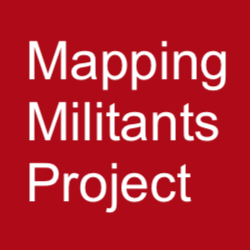Podcast: Post-Assad Syria and HTS
Mapping Militants founder and director Dr. Martha Crenshaw discusses Hay’at Tahrir al-Sham (HTS) with NCITE Director of Strategic Communications and External Relations Erin Grace.
Podcast: A Closer Look At Hezbollah
Mapping Militants founder and director Dr. Martha Crenshaw discusses Hezbollah -- including its conflict with Israel, its ties to Iran, and recent developments in the Middle East -- with NCITE Director of Strategic Communications and External Relations Erin Grace.
Report: Transnational Ties Between Selected U.S. and Foreign Violent Extremist Actors: Evidence from the Mapping Militants Project
This report summarizes and assesses open-source evidence about transnational ties between violent extremist groups based in the United States and foreign state and non-state actors. Drawing from the detailed group profiles developed by the Mapping Militants Project, we find that the violent RMVE and AGAAVE universe is characterized by unstructured connections. U.S.-based RMVE and AGAAVE groups do not engage in widespread or systematic cooperation with foreign state and non-state actors. Rather, the connections that do exist across national borders are episodic, informal, fluid, and largely undirected. While we expect that these ties will not result in coordinated mass-casualty attacks in the near term, transnational relationships clearly have the potential to inspire acts of domestic terrorism by amplifying dangerous ideologies and spreading tactics and strategies to commit violence.
Article: Militant Splinter Groups and the Use of Violence
Existing research portrays militant splinter groups as more violent than their parent organizations due to factors like more extreme preferences or capacity-building needs. Though widely held, the assumption that splinters are particularly violent has not been systematically tested. In this paper, we develop and test an alternative explanation for splinter behavior. We argue splinter groups often appear less violent than their parents due to an underlying selection effect. Splinters break away where there are large organizational barriers to internally address a faction’s grievances. These barriers tend to exist in well-organized parents that are also capable of high levels of violence. Splinter groups lack this established organizational infrastructure, resulting in lower levels of relative violence. We test this logic with an original dataset on parent and splinter groups and a pair of comparative case studies. We find that splinters are less violent than parent organizations, challenging conventional wisdom.
Article: Countering Far-Right Anti-Government Extremism in the United States
In this article, we explore how the organisational and tactical characteristics of the far-right anti-government movement in the United States enable it to thrive despite the dangers it poses to the public. We argue that its deep-seated ideological roots, fluid organisational structure, and mix of violent and nonviolent tactics make the movement difficult for federal and state authorities to proscribe, prosecute, and ultimately eliminate.
Article: The Oath Keepers
Oath Keepers (OK) is a prominent organization within the militia/patriot movement in the United States. This article, published in a special edition of Dynamics of Asymmetric Conflict, discusses the group's organizational development, main objectives, and connections with other far-right groups. Suggested citation: Lokay, Andrew, Kaitlyn Robinson, and Martha Crenshaw. "The Oath Keepers." Dynamics of Asymmetric Conflict 14, no. 2 (2021).
